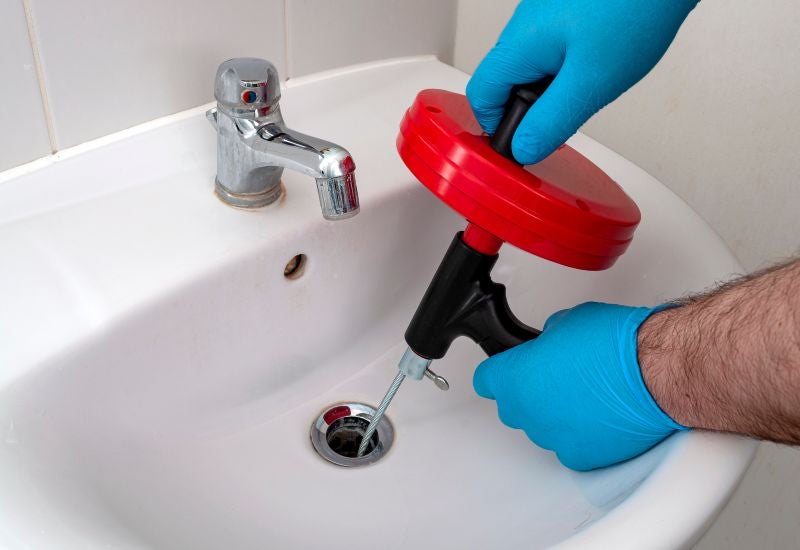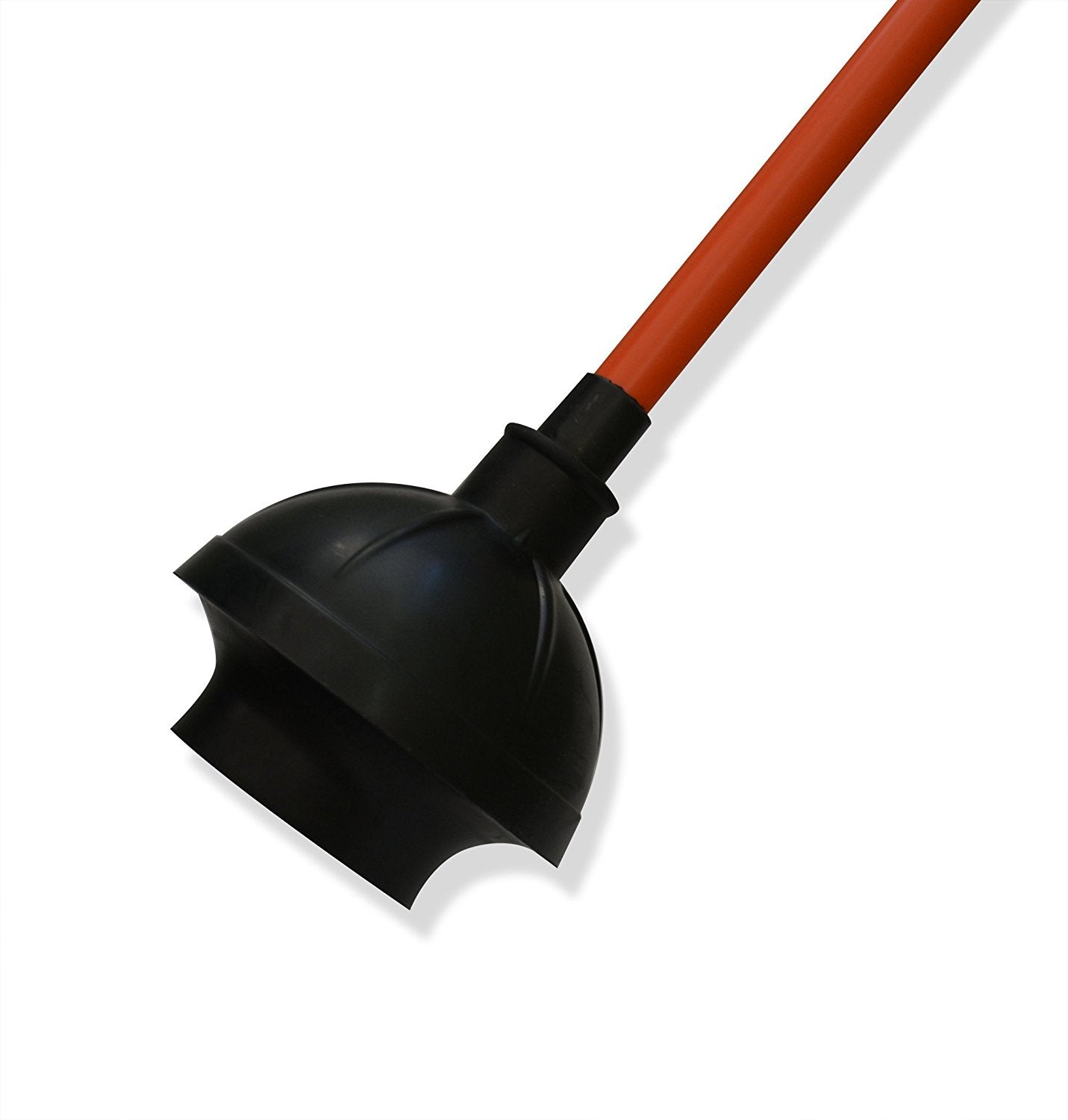Do you find yourself on the lookout for related information involving Tips on How to Effectively Use a Plunger?

Intro
Proper upkeep of household drains pipes is important for protecting against clogs and making certain smooth water circulation. One of the secret devices in every homeowner's toolkit is the plunger, together with numerous drainpipe cleansers designed to tackle stubborn obstructions properly. This short article explores exactly how to use plungers and drain cleaners effectively to keep your drains pipes moving freely.
Section 1: Understanding Bettors
Sorts of Plungers
There are a number of types of bettors readily available, each created for different types of drains pipes and blocks. The most usual types consist of mug plungers, flange bettors, and accordion plungers.
Just How Plungers Work
Bettors service the principle of producing pressure and suction to displace clogs. When appropriately applied over a drainpipe, they develop a vacuum that can take out debris or separate blockages.
Selecting the Right Bettor
Selecting the ideal bettor relies on the type of drain and the nature of the blockage. Mug bettors are perfect for sinks and bathtubs, while flange bettors are much better suited for toilets because of their style.
Typical Blunders with Bettors
Staying clear of these blunders ensures effective plunging: improper seal around the drain, insufficient force, and unclear bordering debris.
Section 2: Using Plungers Effectively
Preparation
Before plunging, make sure the plunger covers the drain completely and forms a tight seal. Clear any kind of noticeable debris around the drain opening.
Strategy
Begin with gentle diving movements to build suction. Rise pressure gradually, making use of a stable rhythm. Repeat as required until the drainpipe clears.
Repairing Tips
If plunging doesn't function, try readjusting the seal, using petroleum jelly for a far better seal, or using a various sort of plunger.
Section 3: Recognizing Drain Cleansers
Kinds Of Drainpipe Cleaners
Drain cleansers can be chemical or chemical. Chemical cleansers use strong chemicals to dissolve blockages, while chemical cleansers use natural enzymes to break down organic matter.
How Drain Cleaning Company Job
Chemical cleaners respond with clogs to liquify them, while enzymatic cleaners break down organic products like hair and grease without hurting pipes.
Safety Considerations
Always put on handwear covers and eye security when utilizing chemical drain cleaners. Make sure sufficient ventilation and adhere to maker directions thoroughly.
Eco-Friendly Alternatives
Consider making use of vinegar and baking soft drink or enzyme-based cleansers for environment-friendly options that are more secure for pipes and the atmosphere.
Section 4: Utilizing Drainpipe Cleaners Properly
Application Techniques
Put chemical cleaners directly into the drainpipe opening. Enable them to work for the advised time prior to flushing with hot water. Enzymatic cleansers must sit over night.
Safety measures
Avoid blending different sorts of cleaners, as this can generate harmful fumes. Never ever utilize chemical cleaners in conjunction with a bettor, as splashing can occur.
Handling Persistent Clogs
For persistent obstructions, consider using a plumbing snake or calling a professional plumbing to prevent damage to pipelines.
Verdict
To conclude, comprehending how to use bettors and drain cleansers successfully is vital for preserving healthy pipes systems. By choosing the right tools and techniques, home owners can deal with small clogs and stop major pipes issues down the line.
How To Properly Use A Plumbing Snake To Clear Drains
When any drain clogs in our home arise, we tend to gravitate toward the plunger and little else. In cases where the plunger and its vacuum-created pressure are not able to clear clogs, many immediately move to harmful chemicals or simply call their plumber to fix the issue.
we’re happy to help with all drain cleaning needs and concerns. This includes informing you on a few other home remedies you may have at your disposal for minor to moderate clogs, one of which is the use of a plumbing snake. Many people have never used one of these before – let’s go over the steps to take when your drain clogs and you have a plumbing snake available.
Attempt Plunger Use
The first step here, as we noted above, should indeed be to grab your plunger when you notice a drain clog and attempt to resolve it this way. If you’re unsure how to use a particular type of plunger, our plumbers can answer any questions you have. If this doesn’t do the trick, however, you move on to the snake.
Locate And Prepare Snake
A plumbing snake is a metal or plastic device that’s generally about a quarter of an inch thick. It’s design with significant extensions, meant to reach down into your clogged drain and push the clog out. Snakes also contain drain augers that will latch onto and push stubborn blockages.
If your plunger doesn’t clear a clog, locate your snake and bring it to the drain in question. We also recommend keeping a bucket nearby to collect the clog once you pull it out, plus we’d advise wearing goggles and possibly protective gloves.
Feed Snake
Once you’re ready to go, feed the snake slowly down the drain, using the crank device it comes with to keep it moving until it finds the clog. Once this happens, much of the clog will be latched onto the coil so you can pull it out, while the rest will simply break up and flow downward.
Detach Debris
Remove the snake slowly from the drain, and once you’ve done so, pick off any debris that’s stuck to the coil. This is another area where wearing gloves is a must.
Flush Drain
Finally, take a few minutes to ensure the snake has done its job correctly. If you’ve been using it on a toilet, flush the toilet a couple times and make sure everything flows well. If you’ve used it on a different drain, flush it with some room temperature water.
https://www.mybuddytheplumber.com/blog/how-to-properly-use-a-plumbing-snake-to-clear-drains/

Application Techniques
Put chemical cleaners directly into the drainpipe opening. Enable them to work for the advised time prior to flushing with hot water. Enzymatic cleansers must sit over night.
Safety measures
Avoid blending different sorts of cleaners, as this can generate harmful fumes. Never ever utilize chemical cleaners in conjunction with a bettor, as splashing can occur.
Handling Persistent Clogs
For persistent obstructions, consider using a plumbing snake or calling a professional plumbing to prevent damage to pipelines.
Verdict
To conclude, comprehending how to use bettors and drain cleansers successfully is vital for preserving healthy pipes systems. By choosing the right tools and techniques, home owners can deal with small clogs and stop major pipes issues down the line.
How To Properly Use A Plumbing Snake To Clear Drains
When any drain clogs in our home arise, we tend to gravitate toward the plunger and little else. In cases where the plunger and its vacuum-created pressure are not able to clear clogs, many immediately move to harmful chemicals or simply call their plumber to fix the issue.
we’re happy to help with all drain cleaning needs and concerns. This includes informing you on a few other home remedies you may have at your disposal for minor to moderate clogs, one of which is the use of a plumbing snake. Many people have never used one of these before – let’s go over the steps to take when your drain clogs and you have a plumbing snake available.
Attempt Plunger Use
The first step here, as we noted above, should indeed be to grab your plunger when you notice a drain clog and attempt to resolve it this way. If you’re unsure how to use a particular type of plunger, our plumbers can answer any questions you have. If this doesn’t do the trick, however, you move on to the snake.
Locate And Prepare Snake
A plumbing snake is a metal or plastic device that’s generally about a quarter of an inch thick. It’s design with significant extensions, meant to reach down into your clogged drain and push the clog out. Snakes also contain drain augers that will latch onto and push stubborn blockages.
If your plunger doesn’t clear a clog, locate your snake and bring it to the drain in question. We also recommend keeping a bucket nearby to collect the clog once you pull it out, plus we’d advise wearing goggles and possibly protective gloves.
Feed Snake
Once you’re ready to go, feed the snake slowly down the drain, using the crank device it comes with to keep it moving until it finds the clog. Once this happens, much of the clog will be latched onto the coil so you can pull it out, while the rest will simply break up and flow downward.
Detach Debris
Remove the snake slowly from the drain, and once you’ve done so, pick off any debris that’s stuck to the coil. This is another area where wearing gloves is a must.
Flush Drain
Finally, take a few minutes to ensure the snake has done its job correctly. If you’ve been using it on a toilet, flush the toilet a couple times and make sure everything flows well. If you’ve used it on a different drain, flush it with some room temperature water.
https://www.mybuddytheplumber.com/blog/how-to-properly-use-a-plumbing-snake-to-clear-drains/

I recently found that review on A Guide to Plungers (and How to Use Them) while browsing the search engines. Sharing is nice. You never know, you may be doing someone a favor. Thank-you for going through it.
Call Today